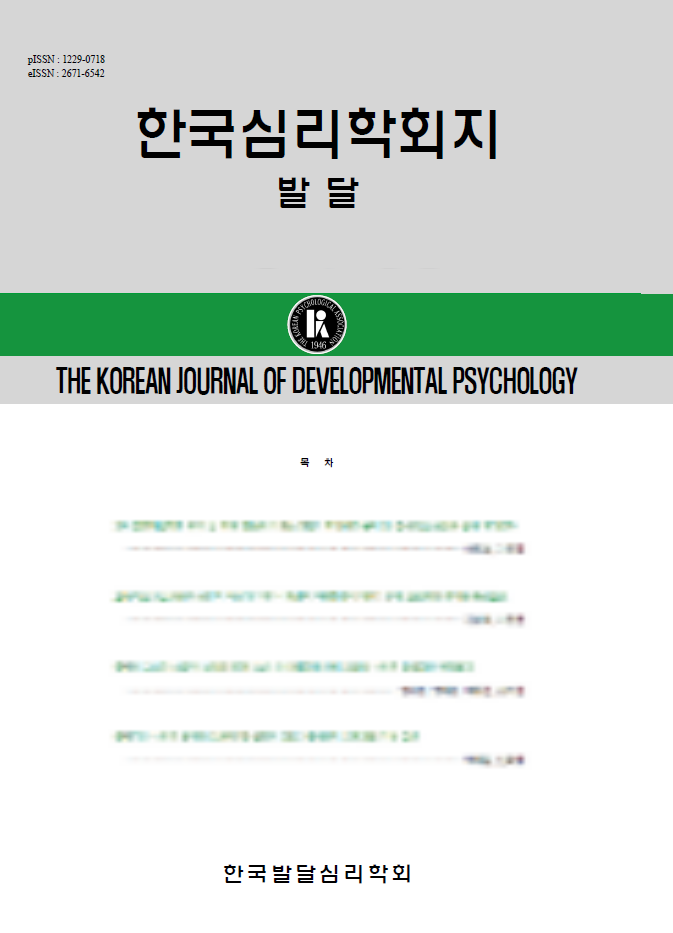open access
메뉴
open access
메뉴 ISSN : 1229-0718
ISSN : 1229-0718

본 연구의 목적은 초등 언어영재, 수학영재, 일반학생이 지능, 창의력 및 언어적 특성에서 어떻게 다른지를 비교ㆍ분석하고, 이들 인지적 특성이 세 집단을 유의미하게 변별해주는지에 대한 판별분석을 통하여, 향후 영역별 영재의 판별에 대한 시사점을 도출하는 데 있다. 연구대상 학생 중, 언어영재와 수학영재는 현재 각 해당분야 영재교육기관(창작반, 수학반)에서 교육을 받고 있는지의 여부를 근거로 선정되었으며, 일반학생은 일반학교에서 표집되었다. 연구에 참여한 학생은 언어영재 50명, 수학영재 53명, 일반학생 57명 등, 총 160명이며, 이들을 대상으로 KEDI 집단 지능검사, 영역별로 특화된 창의적 문제해결력 검사와 언어적 특성 검사를 실시하였다. 연구결과를 정리하면, 지능의 언어영역과 공간영역에서는 언어영재와 수학영재가 일반학생보다 우수한 반면, 두 영재집단간에는 유의미한 차이가 발견되지 않았다. 수리지능은 수학영재, 언어영재, 일반학생의 순으로 나타났다. 영역별 창의력의 경우, 언어영역에서 언어영재가 일반학생 및 수학영재보다 높은 점수를 얻었으며, 수리와 공간영역에서는 언어영재와 수학영재가 일반학생보다 높은 점수를 얻은 반면, 두 영재 집단간에는 유의미한 차이가 발견되지 않았다. 언어적 특성 면에서는 영재집단이 일반학생과 비교하여, 말하기나 읽기를 조기에 시작하는 경향이 높았으며, 언어감각이 우수하고, 쓰기 및 독서활동을 선호하는 것으로 나타났고, 이러한 경향은 수학영재보다 언어영재가 강한 것으로 나타났다. 지능, 창의력, 언어적 특성의 조합에 의한 집단간 판별분석을 실시한 결과, 언어지능과 쓰기 및 독서활동 선호가 일반학생과 영재집단을 가장 잘 변별해주고 있으며, 다시 수리지능과 언어창의력이 수학영재와 언어영재를 효과적으로 변별해주는 것으로 나타났다. 연구결과를 기반으로, 향후 영재 판별에 대한 시사점이 논의되었다.
(2003) 초등학교 언어 영재 아동과 일반 아동의 언어적 창의성 발달에 관한 연구,
(2005) 기질 및 성격검사에서 밝혀진 영재기관 영재의 특성이 영재선발에 주는 시사점,
(2004) 수학 및 언어 영재아동의 영재성 판별변인 분석,
(2003) 영재의 지적, 정의적 특성., 교육과학사
(2004) 지적으로 우수한 초등 영재아의 형식적 사고 초인지 및 창의력에 관한 연구,
(2005) 언어창작 재능계발에 영향을 미치는 심리 및 환경적 요인 성취한 작가 사례를 중심으로 ,
(2003) 일반 창의성 도형과 수학 창의성과의 관련 연구 - TTCT Figural A와 MCPSAT A를 바탕으로, 한국수학교육학회 시리즈 A 수학교육
(2004) 언어적 창의력 프로그램 개발 연구 ,
(2001) 새로운 생각은 어떻게 가능한가 전문분야 창의성에 대한 학습과정 모형접근,
(2000) 창의성의 영역 한정성과 영역 보편성에 관한 분석과 탐구,
(1999) Domains of creativity Encylopedia of creativity,
(1996) Literacy development in verbally talented children Ideas and strategies for teachers of elementary and middle school students,
(1974) The development of an instrument to measure creative ability in mathematics University of Missouri, Unpublished doctoral dissertation
(1990) Cognitive profiles of verbally and mathematically precocious students Implications for identification of the gifted,
(1989) A systems view of creativity The nature of creativity, Cambridge University Press
(1996) Creativity:Flow and the psychology of discovery and invention, Harper Collins Publishers
(1984) Problems in the identification of giftedness,
(1983) Frames of mind:The theory of multiple intelligences, Basic Books
(1993) An anatomy of creativity seen through the lives of Freud, Basic Books
(1995) Reflections on multiple intelligences,
(2000) The education and development of verbally talented International handbook of giftedness and talent,
(1998) Themes in the lives of successful comtemporary U,
(1998) Beware of simple conclusions The case for content generality of creativity,
(1986) The three-ring conception of giftedness A developmental model for creative productivity Conceptions of giftedness, Cambridge University Press
(1986) The legacy and logic of research on the identification of gifted persons,
(1999) The MIDAS handbook of multiple intelligences in the classroom, Greyden Press
(1986) A triarchic theory of intellectual giftedness Conceptions of giftedness, Cambridge University Press
(1986) independent learning through individualized programming Systems and models for developing programs for the gifted and talented, Mansfield Center Creative Learning Press
(1996181-193) Successor to gifted education Journal for the Education of the Gifted,
(1978) Mind in society The development of higher psychological processes, Harvard University Press
(1996) Gifted children:Myths and realities, Basic Books
